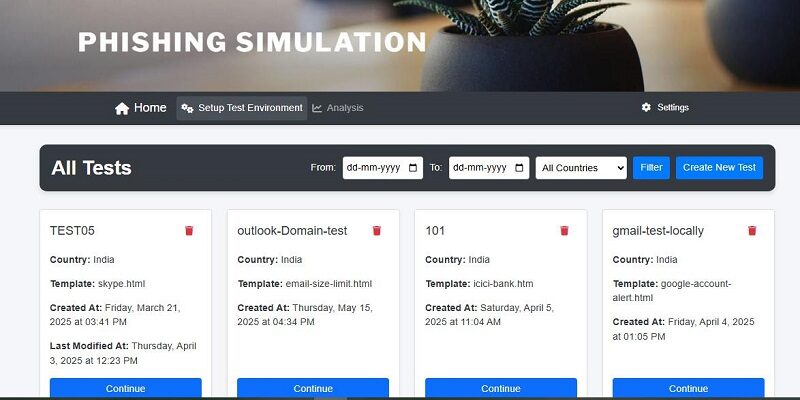~New training platform addresses the growing sophistication of phishing attacks as traditional security barriers strengthen~
New Delhi, June 23, 2025: As corporate networks become increasingly fortified with multi-factor authentication, biometric scanners, and passwordless verification systems, cybercriminals are shifting their tactics toward a more insidious approach: exploiting human psychology through sophisticated phishing campaigns.
In response to this evolving threat landscape, eScan XDR has introduced a comprehensive phishing simulation platform designed to prepare employees for the next generation of social engineering attacks.
The cybersecurity industry is witnessing a fundamental shift in attack methodology. With traditional entry points becoming more secure, threat actors are leveraging generative AI to create phishing content that is fast, scalable, and increasingly indistinguishable from legitimate communication. These attacks can mimic tone, borrow branding, reference internal jargon, and adjust to industry-specific language within seconds. Recent campaigns have targeted European fintech startups with fake VC funding offers and spoofed HR departments with personalized job offers, demonstrating how attackers now operate at machine speed with unprecedented personalization.
“We’re seeing attackers move away from brute-force techniques toward sophisticated impersonation strategies,” said Shweta Thakare, Global Vice President, Sales and Marketing, eScan. “When you can’t break down the front door, you convince someone to open it for you. The challenge is that modern AI tools are making these deception attempts extraordinarily convincing. That’s why proactive, realistic training is essential.”
The new phishing simulator addresses this challenge through controlled exposure training. The platform sends realistic phishing emails to employees across an organization, carefully tracking engagement metrics such as click-through rates, credential entry attempts, and reporting behaviors. Rather than punishing employees who fall for simulations, the system focuses on education and gradual skill building.
What sets this approach apart is its recognition that traditional phishing simulations are no longer adequate. Modern attacks require employees to spot nuance, context manipulation, and sophisticated impersonation attempts that go far beyond obvious spelling errors or suspicious links. The simulator continuously adapts its scenarios based on current threat intelligence; ensuring employees encounter the types of attacks they’re most likely to face as adversaries use scraped LinkedIn profiles, leaked data, and recent news events to craft believable lures.
The platform generates detailed analytics that help security teams identify vulnerability patterns across different departments and roles. This data enables targeted training programs that address specific weaknesses without overwhelming employees with generic security advice they’re unlikely to retain or apply.
Early implementations have shown promising results, with organizations reporting significant improvements in employee detection rates after consistent exposure to varied phishing scenarios. The key insight driving these results is that cybersecurity awareness works best as an ongoing process rather than periodic training events.
The timing of this launch reflects broader industry concerns about how generative AI has fundamentally changed the phishing landscape. Language is becoming the payload, with attackers using AI models to generate text that closely mimics legitimate business correspondence. Traditional email filters, which rely on static indicators like suspicious domains or attachments, struggle with this new generation of linguistically accurate, dynamically generated content.
eScan XDR’s simulator represents a proactive approach to this challenge, acknowledging that perfect prevention is unrealistic in an environment where attack methods evolve constantly. Instead, the focus shifts to building organizational resilience through improved human detection capabilities.
The platform integrates with existing security infrastructure, providing seamless reporting and incident response workflows. This integration ensures that phishing defense becomes part of an organization’s broader security posture rather than an isolated training exercise.
As cyber threats continue evolving, tools like eScan XDR’s phishing simulator represents recognition that this is no longer just a numbers game – it’s a language game. Effective cybersecurity requires addressing both technical vulnerabilities and human factors, especially as the window to detect and respond to AI-powered attacks continues to shrink.





